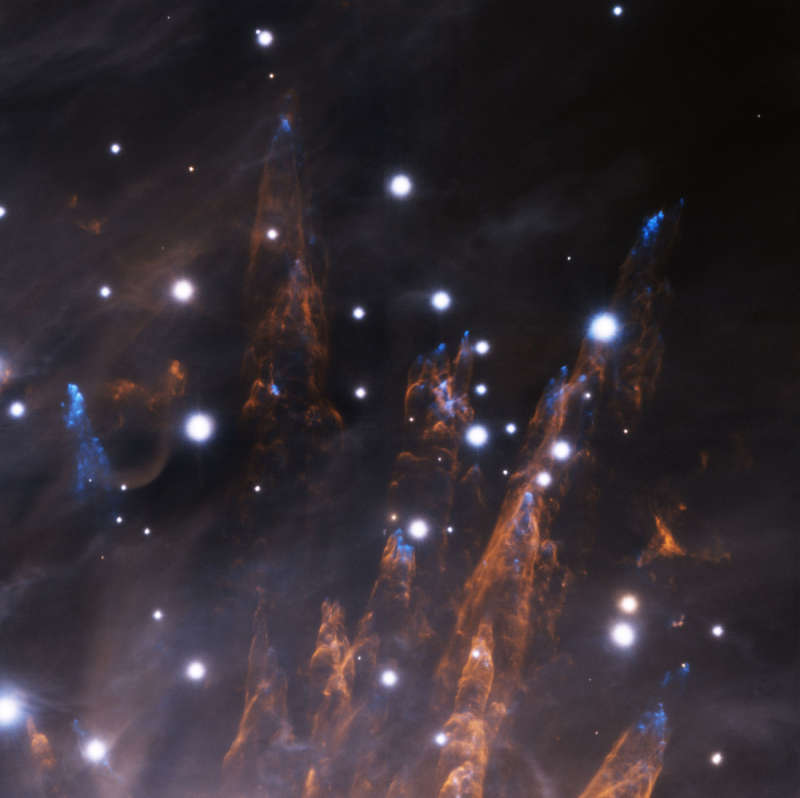Credit & Copyright: GeMS/GSAOI Team,
Gemini Observatory, AURA
Processing: Rodrigo Carrasco (Gemini Obs.), Travis Rector (Univ. Alaska Anchorage)
Explanation:
Cosmic bullets pierce the outskirts of
the Orion Nebula some 1500
light-years distant in this
sharp infrared close-up.
Blasted out by energetic massive star formation
the bullets, relatively dense,
hot gas clouds about
ten times the size of Pluto's orbit, are blue in the false color image.
Glowing with the light of ionized iron atoms they travel at speeds
of hundreds of kilometers per second,
their passage traced
by yellowish trails of the nebula's shock-heated
hydrogen gas.
The cone-shaped wakes are up to a fifth of a light-year long.
The detailed image was created using the 8.1 meter
Gemini South
telescope in Chile with a newly commisioned
adaptive optics system (GeMS).
Achieving a larger field of view than previous generation
adaptive optics,
GeMS uses
five laser generated guide stars
to help compensate for the blurring effects of planet Earth's
atmosphere.
Processing: Rodrigo Carrasco (Gemini Obs.), Travis Rector (Univ. Alaska Anchorage)
Best of APOD 2012:
Download a free 2013 APOD Calendar
1999 2000 2001 2002 2003 2004 2005 2006 2007 2008 2009 2010 2011 2012 2013 2014 2015 2016 2017 2018 2019 2020 2021 2022 2023 2024 2025 |
Yanvar' Fevral' Mart Aprel' Mai Iyun' Iyul' Avgust Sentyabr' Oktyabr' Noyabr' Dekabr' |
NASA Web Site Statements, Warnings, and Disclaimers
NASA Official: Jay Norris. Specific rights apply.
A service of: LHEA at NASA / GSFC
& Michigan Tech. U.
|
Publikacii s klyuchevymi slovami:
Orion Nebula - infrared - star formation - adaptive optics - Tumannost' Oriona - gaz
Publikacii so slovami: Orion Nebula - infrared - star formation - adaptive optics - Tumannost' Oriona - gaz | |
Sm. takzhe:
Vse publikacii na tu zhe temu >> | |
